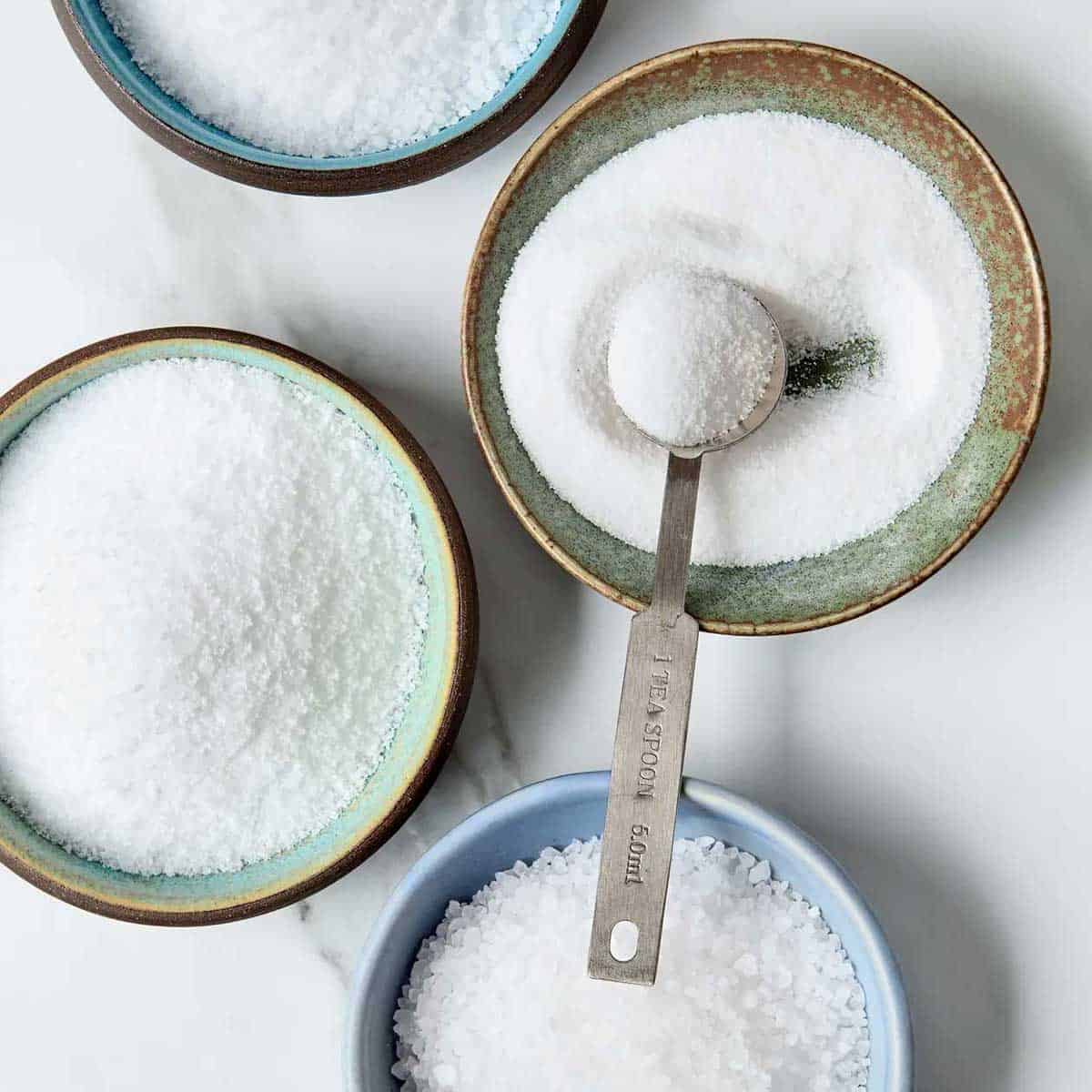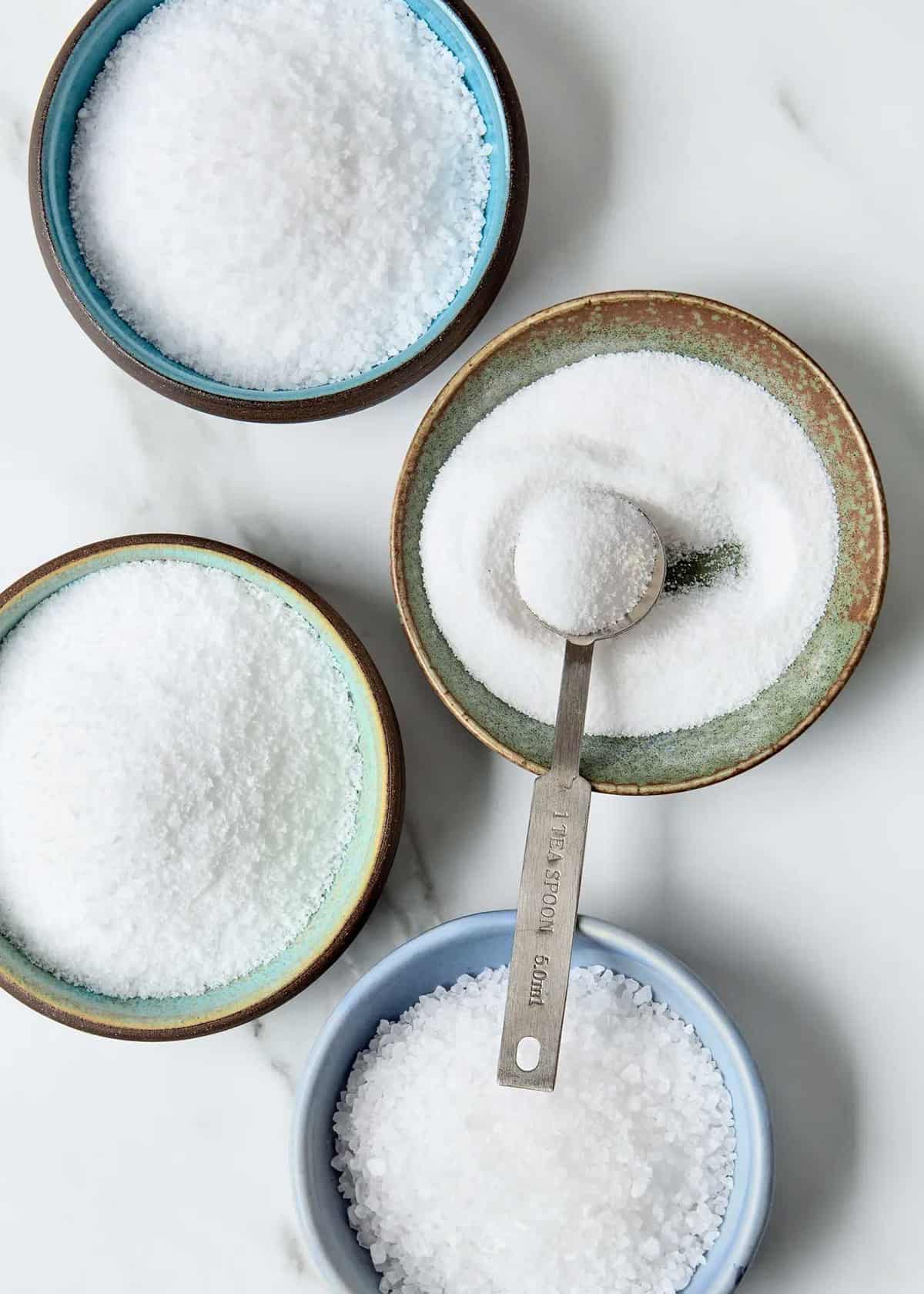published Jun 25, 2021, updated Jan 27, 2024 Photo Credit: Epicurious, Travis Rainy
Kosher Salt vs Table Salt vs Sea Salt
In the realm of culinary adventures, the diversity of salts available today can be as intriguing as the variety of dishes they enhance. Kosher salt, table salt, and sea salt are three popular options that can significantly influence the taste and texture of your creations. Photo Credit: Epicurious, Travis Rainy
The Difference Between Each and How to Use Them
Kosher Salt – it got its name from its traditional use in the koshering process of meat, which involves drawing out blood or preserving. Unlike table salt, kosher salt doesn’t have iodine additives and contains larger, irregularly shaped crystals. These flakes make it easier to pinch, facilitating a more controlled and even seasoning of dishes. Hence chefs worldwide prefer it. It is well-suited for a variety of culinary applications, from seasoning meat to enhancing the flavor of vegetables. Its texture and lack of additives make it a favorite among chefs for its ability to add a burst of flavor and the right amount of salinity to each bite. Table Salt – often known as refined salt, is the most common salt found in everyday households. It’s obtained through a process that involves mining salt deposits and then refining the salt to remove impurities. This results in fine, evenly-sized crystals that are densely packed, making it a salt with a high level of salinity per volume. Its uniformity and fine texture make it an ideal choice for baking, where precision in measurements is crucial. Additionally, table salt often contains additives like iodine, which is essential for preventing iodine deficiency. Sea Salt – as the name implies, is derived from the evaporation of seawater. Its production methods can vary, resulting in a wide range of textures and flavors. Sea salt generally has larger crystals than table salt and offers a more natural, uneven appearance. The minerals present in the water give sea salt a distinct flavor profile that can enhance the overall taste of dishes. It’s often used as a finishing touch, sprinkled on top of dishes just before serving, to add a delightful crunch and a burst of briny flavor. The delicate crunch and unique flavors make sea salt a favorite for enhancing the final presentation of a dish. Pickling Salt – Pickling salt is also known as preserving salt and canning salt. It’s a fine-grain, edible, pure salt that is typically use to make pickles or preserve canned ingredients. It has no added iodine, anti-caking agents, or trace minerals that potentially-discolor the end product like iodized salt (regular table salt) does. Why is it preferred for Canning? It has no additives, leaving a clear pickle brine that won’t discolor your ingredients. It also dissolves quickly in pickling liquid and infuses the vinegar.


